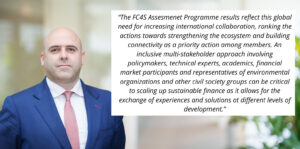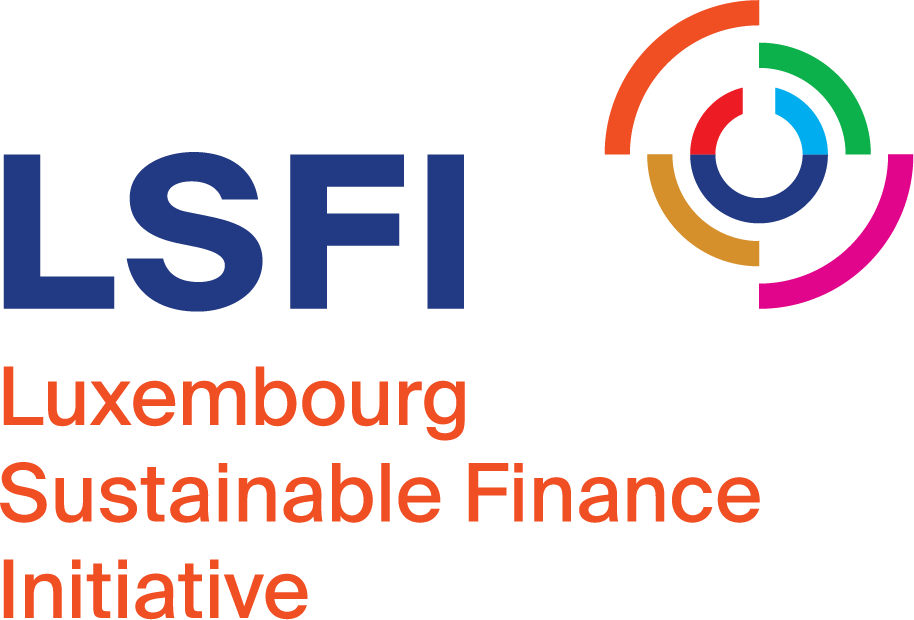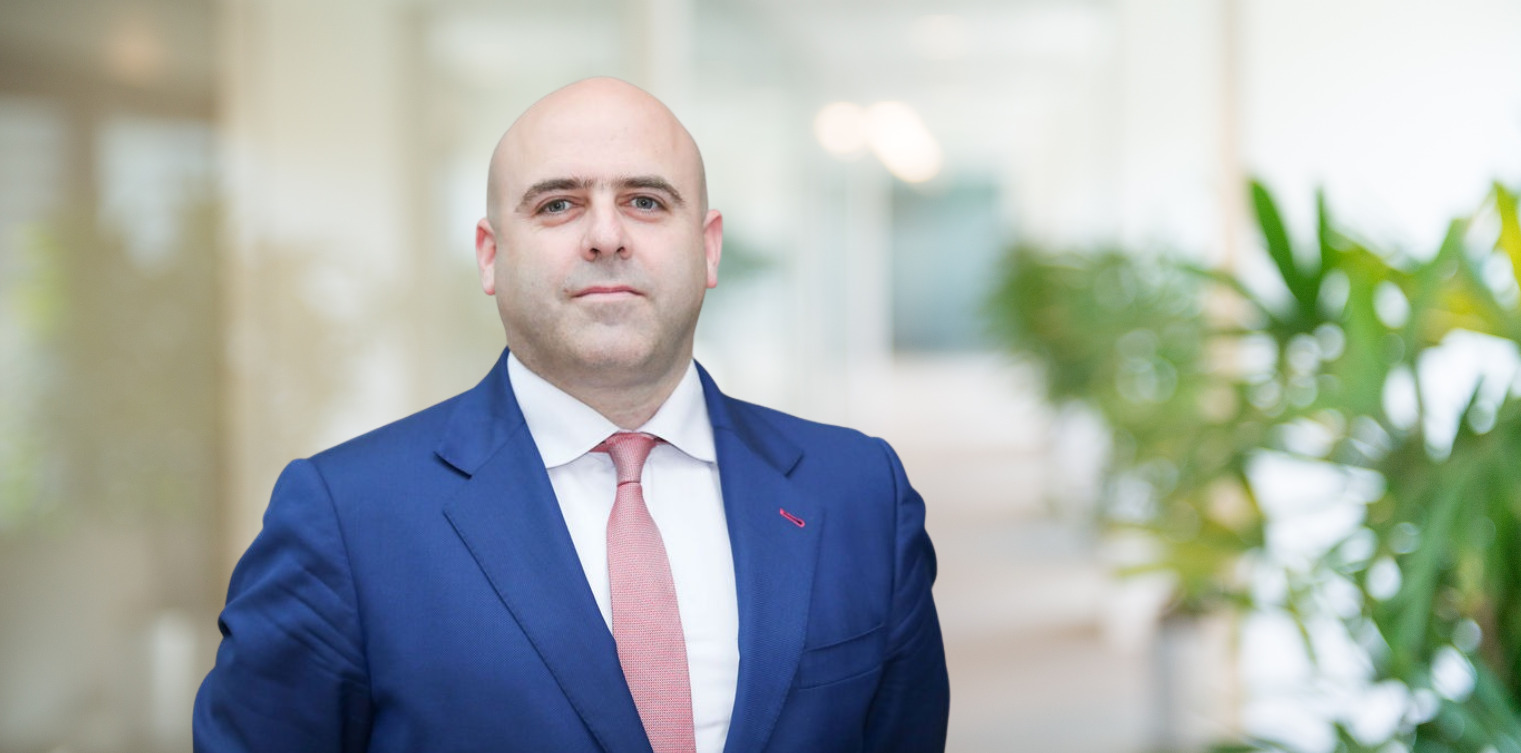On the transition towards sustainability, the different jurisdictions and countries present particularities and face diverse challenges and paces of development. However, it is also a shared journey in which understanding the commonalities and actions pursued, and fostering dialogue and sharing best practices can be key to consolidating and accelerating this path.
This month we have interviewed Stephen Nolan, Managing Director of Financial Centres for Sustainability (FC4S). We discussed how the financial centres have evolved regarding sustainable finance and the main challenges and gaps that his organisation has identified across the globe. We also talked about how countries can find synergies and further collaborate to advance the transition.
Luxembourg Sustainable Finance Initiative (LSFI): FC4S was created in 2017. What is your mission and why was it created?
Stephen Nolan (SN): Established in mid-2018, the UNDP Financial Centres for Sustainability (FC4S) Network is a collective of 39 financial centres working together to achieve the objectives set by the 2030 Agenda and the Paris Agreement. The FC4S concept was born out of Italy’s G7 Presidency in 2017. Financial centres are of primary importance to the structure, function, and dynamics of the global economy, north and south where interlocking financial activities such as banking, capital markets, insurance are concentrated. Through regulatory, coordination and investment channels, financial centres can fundamentally shape the incentives of individual companies to integrate aspects of sustainable development into regular business. The global scale of the FC4S collective’s vision is best represented by the regional variety of members, who all believe in driving convergence, exchanging experiences, and acting on shared priorities to accelerate the expansion of green and sustainable finance. FC4S also serves as the secretariat to the Sustainable Finance Development Network (SFDN), an output of the 21-member Asia Pacific Economic Cooperation (APEC) Business Advisory Council. With overlap, today FC4S is supporting activities in over 50 countries.
(LSFI) Since 2018 and every year, FC4S conducts an Assessment Program examining the progress of the green and sustainable finance agenda within member centres. What are the main findings from the latest assessments? And, how have the financial centres evolved over the last four years?
(SN) The FC4S Assessment Programme (AP) is the first of its kind in evaluating the state of sustainable finance across the world’s leading financial centres. Since 2018, it has helped to identify patterns in sustainable finance development and performance as well as areas where the potential of the sustainable finance ecosystem has not yet been fully exploited. It also provides a unique analysis of financial centres’ individual progress made over the course of the last four years. By identifying members’ challenges and opportunities and building on the excellent efforts they are undertaking, this global programme ensures FC4S can continue to develop value-adding services for each member and to inform local, regional, and global policy – including through cooperation with other international bodies.Summarised, key highlights of the most recent Assessment Programme include:
- Poor data quality and availability remain strong barriers. Stakeholders are in growing need of high-quality data and metrics due to market pressure, policy assessment and ambition to develop new products and services. Widespread access to sustainability-related information can help boost the assessment of sustainability-related risks and opportunities, allowing capital to be better deployed and risk management and financial stability to improve.
- Improved interoperability and standardization remain top priorities. The multiplicity of disclosure standards during the last years has been a barrier to the effective comparability and integration of sustainability-related factors into the investment decision process. To maximize the efficacy, efficiency and integrity of sustainable financial markets, convergence towards universal definitions and interoperability are required. Standardization will support closing the private investment gaps to deliver on the 2030 Agenda ambitions.
- Unaddressed demand for sustainable finance skills and talent within financial industry’s organizations. The presence of talent and skills continues to be a critical issue to the growth of the sustainable finance ecosystem. An increasing number of financial education and training programmes at different levels are reported to provide basic sustainability knowledge and sustainability-related tools. Yet, leading financial centres, private actors and international institutions are demanding for more advanced-level skills for the practice of sustainable finance like graduate and postgraduate programmes.
- The regulatory environment remains a critical driver. Financial centres are seeing an increasing number of regulations and policies to both manage sustainability risks and to increase the share of sustainable capital flows.
- Commitments from public authorities are key for take-off. Public authorities can play an important role in encouraging the implementation of the SDGs, addressing shared challenges and promoting the use and harmonization of existing market tools and methods. More specifically, they can play an important role in the strategic use of development finance for the mobilization of capital towards sustainable development. 27 out of the 29 sampled financial centres were home to at least one financial instrument or incentive implemented by public institutions. Designing and implementing public instruments, such as innovative sustainable financial products, can trigger market creation and foster the necessary behavioural change by market participants.
(LSFI) What are the main similarities and differences that you have observed among countries with regard to their sustainable finance journey?
(SN) Sustainable finance is a rapidly evolving field, and there is a lot of diversity in terms of how countries approach this issue. Despite this, we have observed some commonalities among countries in their sustainable finance journeys. These include increasing awareness with a growing recognition among countries of the importance of sustainable finance and the role it can play in promoting economic, social, and environmental sustainability. In addition, many countries have taken policy initiatives to promote sustainable finance, such as the development of sustainable finance strategies, green bond issuances, and the establishment of sustainable finance-focused regulatory frameworks. The sustainable finance market is also growing rapidly, as many countries are seeing an increase in the volume of sustainable finance instruments, such as green bonds, social bonds, and sustainable investment funds. On the flip side, key differences include the pace of development in sustainable finance varies widely among countries, with some countries leading the way, while others are still in the early stages of development. Countries have also different focus areas when it comes to sustainable finance, reflecting their unique economic, social, and environmental challenges. However, despite the diversity among countries in their sustainable finance journeys, there is a growing recognition of the importance of sustainable finance and a generalized commitment to promoting its growth and development.
(LSFI) FC4S also seeks to be a platform of exchange. Which areas do you think the different jurisdictions could leverage synergies or share best practices? At the global level, do the financial centers work in silos, or is there collaboration in place?

Stephen Nolan, Managing Director of Financial Centres For Sustainability (FC4S)
(SN) Within the FC4S membership, we are seeing an increase in the sharing of best practices in the development of sustainable finance markets, including the issuance of sustainable finance instruments, such as green bonds and social bonds, and the growth of sustainable investment funds. Members are also working together to support/promote common reporting standards for sustainable finance, which could help to ensure consistency and transparency in the reporting of sustainable finance activities. In addition, members are also sharing their experiences and best practices in promoting education and capacity building in sustainable finance. This could help to ensure that there is a sufficient pool of qualified professionals with the necessary skills to support the growth of sustainable finance.
At the global level, do the financial centers work in silos, or is there collaboration in place?
FC4S is formed from the idea that a collaborative approach is needed to unlock the funds needed to achieve the SDGs and the Paris Agreement, while ensuring that private sector commitments and pledges are delivered against. And, more specifically, that the coordination power of financial centres is critical to unfold the agenda towards a sustainable global financial system. Acknowledging this, FC4S continues to lay the groundwork that supports deeper bilateral, regional, and international sustainable finance cooperation among members and other important actors. Indeed, the FC4S AP results reflect this global need for increasing international collaboration, ranking the actions towards strengthening the ecosystem and building connectivity as a priority action among members. An inclusive multi-stakeholder approach involving policymakers, technical experts, academics, financial market participants and representatives of environmental organizations and other civil society groups can be critical to scaling up sustainable finance as it allows for the exchange of experiences and solutions at different levels of development.
(LSFI) In addition to evaluating the status of sustainable finance, FC4S also provides tools and insights to accelerate the transition. Can you tell us about these tools or activities and how these help your network?
(SN) In its role of assessing the state of sustainable finance in the key financial centers of the globe, the AP itself is a tool that helps accelerating the sustainability transition as it enables financial centres to set priorities when developing a sustainable finance strategy and to identify potential actions pathways. Indeed, the most frequently cited use of the AP has been benchmarking, followed by informing strategies at the financial centre level. This directly influences the sustainability transition. In addition, reacting to the lack of knowledge and to help raise awareness of the importance of using robust climate data and monitoring climate commitments, FC4S regularly organises knowledge sessions with members to familiarize finance professionals with available science-based tools and methodologies that help report, measure, and disclose their sustainable finance strategies consistently, for example PCAF (the Partnership for Carbon Accounting Financials), SBTi (the Science Based Targets initiative) and PACTA (Paris Agreement Capital Transition Assessment).
Moreover, given the urgency of using more and better quality sustainability data, in 2022, FC4S organized a closed session for members to explain the relevance of the IFRS ISSB Consultation on their two drafted sustainability standards, and aims to continue collaborating in communicating advances of this industry standard setting body on this regard. This is a groundbreaking step towards global standardization and as such, is a direct enabler of the sustainability transition.
Additionally, in collaboration with the World Bank, under the direction of the Principle 5 Workstream of the Coalition of Finance Ministers for Climate Action, FC4S undertook a detailed analysis of the structure and characteristics of 41 sustainable finance roadmaps created by 30 countries, including case studies to understand how their recommendations are being considered within national activities and strategies. Luxembourg’s Sustainable Finance strategy formed part of this review. This late 2021 analysis concluded on 13 key recommendations for building effective sustainable finance roadmaps. On the back of this we are now able to assist members as they work to develop their own roadmaps.





